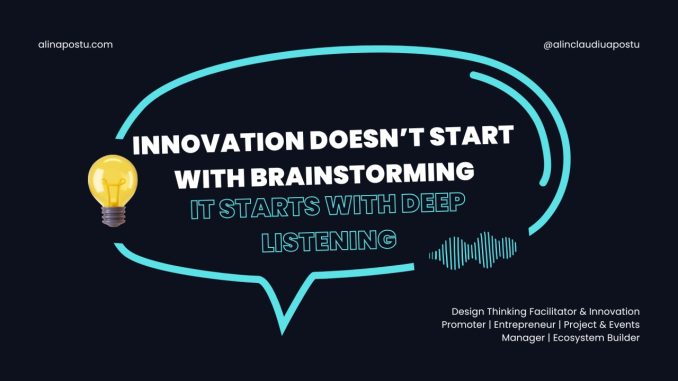
Innovation is often portrayed as a flash of genius—a sudden, brilliant idea that changes everything. We imagine inventors in labs, entrepreneurs sketching on napkins, or designers unveiling sleek new products that no one saw coming. But in reality, most innovation doesn’t begin with invention. It begins with listening. The most transformative ideas are not born in isolation; they emerge from paying close attention to the people we serve, the problems they face, and the subtle signals they send. Listening is not just a soft skill—it’s the engine of meaningful progress.
When businesses talk about innovation, they often focus on technology, disruption, or differentiation. These are important, but they can become distractions if they’re pursued without context. Listening grounds innovation in reality. It ensures that new ideas are not just novel, but necessary. A company that listens well is constantly gathering insights—not just through formal research, but through everyday interactions. Customer complaints, employee suggestions, market feedback, and even silence can be rich sources of inspiration. The key is to approach these inputs with curiosity rather than defensiveness.
Consider the story of Netflix. In its early days, the company was a DVD rental service competing with Blockbuster. What set Netflix apart wasn’t just its business model—it was its ability to listen. Customers didn’t want late fees. They wanted convenience. Netflix responded by introducing a subscription model and eventually pivoting to streaming. That shift wasn’t driven by a desire to be cutting-edge; it was driven by a deep understanding of what people actually wanted. Listening revealed the path forward, and innovation followed.
Listening also plays a critical role inside organizations. Employees are often closest to the problems that need solving, yet their voices are frequently overlooked. When leaders create space for honest dialogue, they unlock a powerful source of innovation. A frontline worker might notice inefficiencies that executives miss. A junior developer might have a fresh perspective on user experience. These insights don’t require massive R&D budgets—they require trust, openness, and a willingness to hear what’s really going on. Innovation thrives in cultures where listening is valued more than hierarchy.
The same principle applies to design. Great designers don’t start with aesthetics; they start with empathy. They observe how people interact with products, what frustrates them, what delights them, and what they ignore. This kind of listening is active and intentional. It involves watching, asking, and interpreting. The result is design that feels intuitive—not because it’s flashy, but because it resonates. Think of the way Airbnb redesigned its platform to make hosts feel more supported and guests feel more secure. Those changes weren’t arbitrary; they were responses to real concerns voiced by users.
Listening also helps businesses avoid the trap of solving problems that don’t exist. It’s easy to get caught up in the excitement of new features or bold ideas, but if those innovations don’t address actual needs, they fall flat. By staying close to the customer, companies can ensure that their efforts are aligned with demand. This doesn’t mean abandoning creativity—it means channeling it toward relevance. Innovation becomes a dialogue, not a monologue.
Importantly, listening is not passive. It requires effort, attention, and humility. It means setting aside assumptions and being willing to be surprised. It means asking questions without leading the answers and being open to criticism. In many ways, listening is a form of leadership. It signals respect, builds trust, and creates a foundation for collaboration. When people feel heard, they’re more likely to engage, contribute, and support change.
Technology can enhance listening, but it can’t replace it. Data analytics, sentiment analysis, and AI tools can surface patterns and trends, but they must be interpreted through a human lens. Numbers can tell you what’s happening, but not always why. That’s where qualitative listening comes in—conversations, interviews, and observations that reveal the emotional and contextual layers behind behavior. The most innovative companies combine quantitative rigor with qualitative depth, using both to inform their decisions.
Listening also requires patience. Not every insight leads to immediate action. Sometimes, it takes time for patterns to emerge or for ideas to mature. But even when the payoff isn’t instant, the practice of listening builds a reservoir of understanding that can be drawn upon when the moment is right. It’s a long game, but one that pays dividends in resilience and relevance.
Ultimately, innovation is not about being the loudest voice in the room—it’s about being the most attentive. It’s about tuning in to the needs, hopes, and frustrations of others and responding with creativity and care. When businesses embrace listening as a core competency, they unlock a deeper kind of innovation—one that’s not just clever, but compassionate. And in a world that’s constantly changing, that kind of innovation is not just valuable—it’s vital.